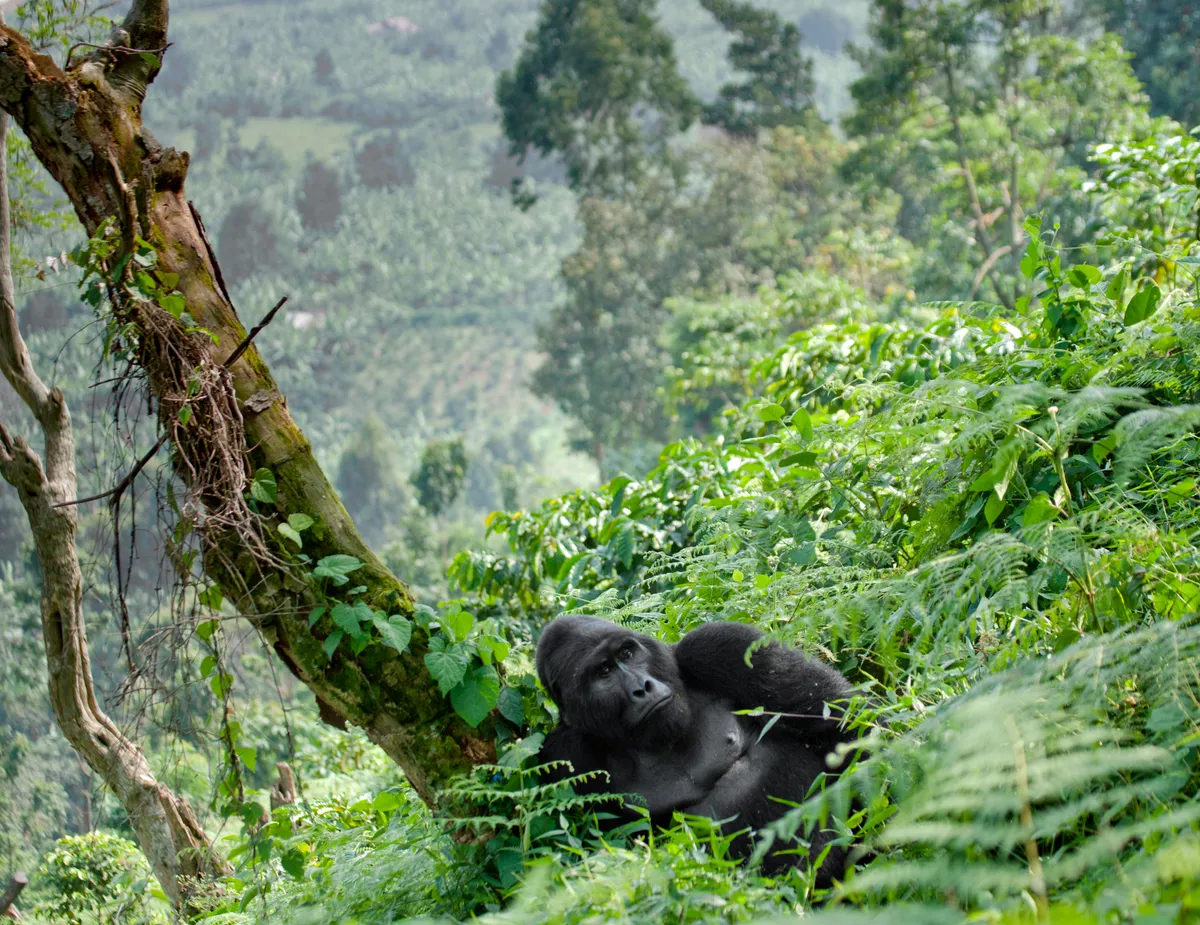Mountain gorillas, a subspecies of the eastern gorilla, have been reclassified from Critically Endangered to Endangered by the IUCN in an update to the Red List.
The reclassification comes after intensive conservation action and collaborative efforts between organisations and communities in the Democratic Republic of Congo, Rwanda and Uganda.
In 2008, the population of mountain gorillas was estimated to be 680 individuals but the most recent estimates show an increase to over 1,000 individuals.
“Whilst it is fantastic news that mountain gorillas are increasing in number, this subspecies is still Endangered and therefore conservation action must continue,” says Dr Liz Williamson of the IUCN SSC Primate Specialist Group.
“Coordinated efforts through a regional action plan and fully implementing IUCN best-practice guidelines for great ape tourism and disease prevention – which recommend limiting numbers of tourists and preventing any close contact with humans – are critical to ensuring a future for the mountain gorilla.”

“This is a remarkable and unique conservation success story,” says Dr. Tara Stoinski, president and CEO/chief scientist of the Dian Fossey Gorilla Fund.
“It is the result of decades of on-the-ground protection by hundreds of dedicated individuals. Mountain gorillas have experienced some of the highest levels of protection of any animal — more than 20 times the global average of field staff per square kilometer. This is the type of extreme conservation required if we want to ensure a future for wildlife.”
A number of threats are still faced by mountain gorillas, including disease, limited habitat and climate change.
Mountain gorillas are one of the eastern gorilla subspecies – the other subspecies, Grauer’s gorillas, is still listed as Critically Endangered.
Both subspecies of western gorilla – cross river gorillas and western lowland gorillas – are also listed as Critically Endangered.
Gorillas are some of our closest relatives and they're fascinating creatures. Find out more about them by checking out our top 13 gorilla facts here:
What other species are included in this IUCN Red List update?
- Fin whale – reclassified from Endangered to Vulnerable as the global population has roughly doubled since the 1970s.

- Bolson tortoise – reclassified from Vulnerable to Critically Endangered. This species is the largest North American tortoise and has plummeted by 64 per cent in 30 years from increased consumption and widespread habitat loss.

- Titan arum – the infamous plant (aka the corpse flower) has been classified as Endangered in its first assessment for the IUCN Red List, following a decline of 50 per cent in the last 150 years. It is threatened by logging and the loss of habitat due to oil palm plantations.

- Vene - this timber tree has been assessed by the IUCN and listed as Endangered, due to illegal logging.
- Agarwood - 13 of the 20 Aquilaria agarwood species are threatened with extinction. Used to produce perfume and fragrances, agarwood has a high economic value and is one of the most expensive woods in the world, and is often harvested illegally.
- 54 species of fish from two important fisheries are threatened with extinction due to unsustainable fishing.
